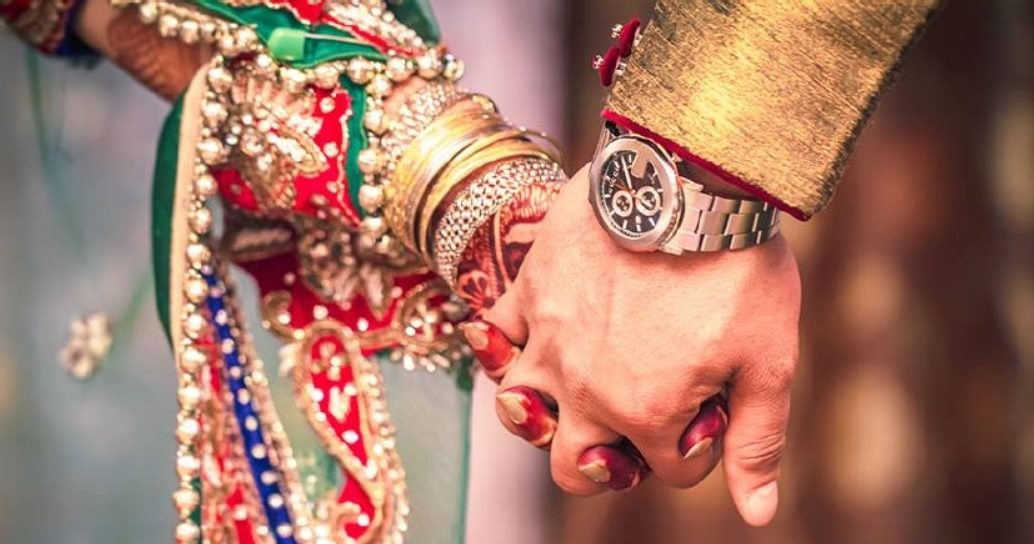The people of Kashmir are very simple in their lifestyle, yet at the same time, very complex and rigid about their weddings. The wedding process starts with a simple thought of parents that they have decided to get their kids married, and the same is delivered to their kids. TBH, it’s not a simple thought. Kashmiris live for only two things – getting their kids married and redesigning their house. So when the kids reach the right age, parents get excited and thus begins the wedding journey.
First, the willingness of a girl/boy is asked (which happens rarely), and they are also asked if they like someone (again, very rarely). After all the discussions and fights (in case the boy or girl isn’t ready and no one cares about that), the preparation for the hunt of one’s soulmate begins, while keeping in mind all the norms and customs of society.
The following post lists all the essential formalities a Kashmiri bride and groom have to go through before their wedding in Kashmir. So this is the Kashmiri version of How I met your mother.
Lukh Kya Wanan
The kids in Kashmir, right from the very beginning of their childhood are prepared for the marriage, especially girls. So one needs to be prepared for all the ‘lukh kya wanan’ talks and things that a girl has to hear before she gets married.

The parents in Kashmir treat their girls as if they are taking care of them for someone else. There is a typical Kashmiri saying, “koor gayi luk-sund maal” (a girl is the treasure of someone else i.e. the future husband of the girl.)
The girl’s father is always tensed regarding her daughter’s wedding. They are always thinking about whether they will get a nice, well-to-do family and whether the boy will treat their daughter well or not, how will the wedding happen, what will society say if someone rejects a proposal, and so on (reminds me of the song Kya Karie korimol).
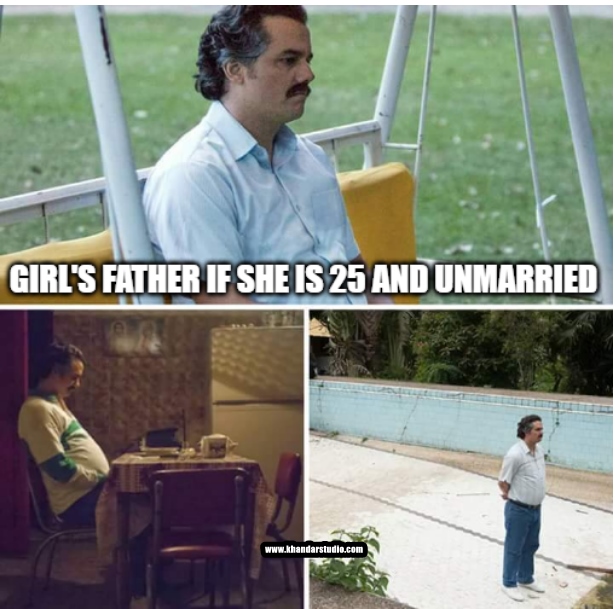
Similarly, it’s not easy for the boy as well. The constant pressure of ‘apne pavun p khada khona’ as soon as possible can get disturbing at times. If a boy takes time for his business or fails at something at first while figuring out his passion, society looks down upon him and he is tagged as useless (KUNI KAMI HUND CHU-NI AMIS YE NECHOVE).
Fun Fact: You know the worst part? We are all part of that society and we do the same thing to others.
Calling Manzimyoor
Once the family has decided to find a match for their kids, a manzimyoor (Middle man/Middle woman) is called home. He/she is the one who brings in proposals (rishtas) based on what qualities one is looking for. He is the cupid of a Kashmiri wedding story.

When a proposal gets shortlisted, a member of the family calls manzimyoor and says that one is interested in that proposal. Then the manzim-yoor tells other family that a boy or girls’ family is interested in your son/daughter. If they also like the proposal, then a meeting is arranged between two families.
The boy and girl don’t meet until both the families like each other based on qualities, decency, the place and locality one lives in, and of course, the caste system. A manzim-yoor takes care of all those qualities.
In Kashmiri language, we have a saying about manzim-yoor and it goes, “Manzim-yoor chu khalaan ti, manzim-yoor chu walaan ti”. Meaning, a manzim-yoor can make a bad proposal look good and a good proposal look bad, as he is the medium of communication.
Vichni Gachun
After the interest in the proposal, one or two family members come to meet the other family along with the boy and the girl. The meeting is generally carried out at a park, a restaurant, or online.

In the first meeting, a boy and girl usually talk about their profession, their likes and dislikes, and what one looks for in a partner. After some time, the manzim-yoor calls them and they depart.
Aankar ya Nakaar
After that, their respective families ask them about the liking of the other person. Usually, it’s done after reaching the home. But some do it right at the moment itself. Imagine taking a life decision within a few minutes.
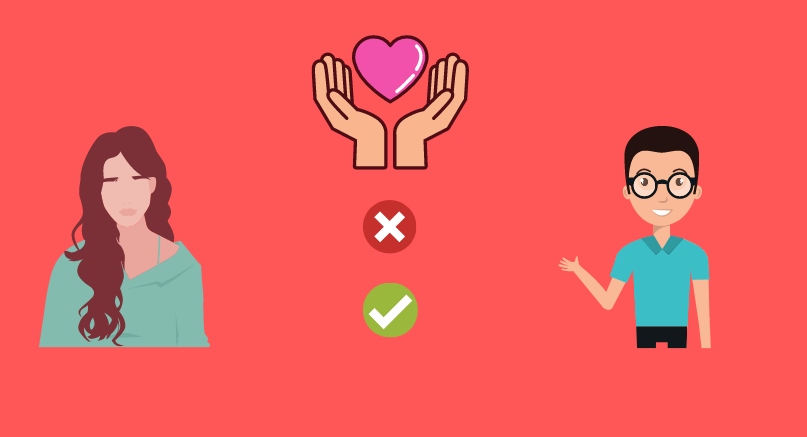
Thaph
If it is a yes from both of them, then gold coins are exchanged between the two families, which is a symbol that we are now bonded as families. Then, both families inform their close relatives about the bond.
The respective families of a boy and girl exchange sweets between them. The number of sweet boxes ranges from 70-200 depending on how much one can afford. The same sweets are distributed among their neighbors and to all the relatives. The distribution of sweets is a way to inform everyone about their kid getting engaged.
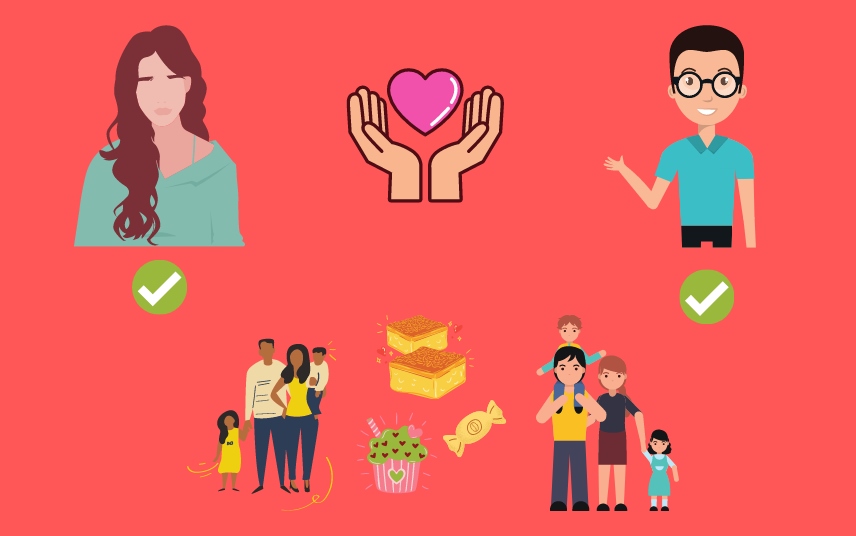
Mubarak Time
Once the thaph is done, relatives visit the house of the bride or groom for mubarak. They give them gifts in the form of cakes, gold-ring, or cash depending on what one can afford.
Meanwhile, the boy and girl start talking to each other on the phone. And they plan out dates for meeting alone. Just like Romeo and Juliet! Oh! I wish I was writing my story.

Nishaen or Engagement Ceremony
After the above process, comes the engagement function (or in some cases thaph and engagement together). Usually, the family members from the boy’s family go to the girl’s house with sweets, fruits, and of course gold. And give it to the girl (now their daughter-in-law) as a symbol of love and a symbol of bond. The boy’s family is usually invited for a full wazwaan meal (lunch or dinner). The manzim-yoor is always accompanying the boy’s family when they are going to meet the girl’s family.
The girl dresses up as a proper bide on her engagement ceremony as well (in most of the cases). She wears a lehenga along with gold jewelry and does bridal make-up.
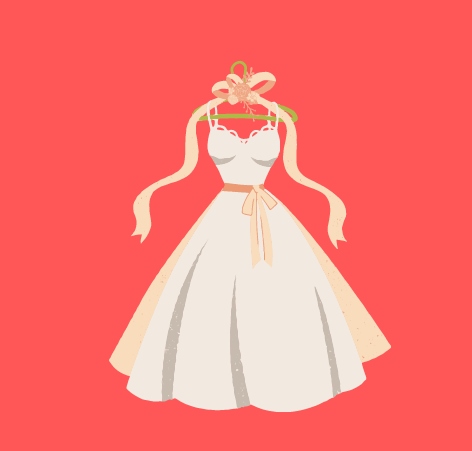
Some families perform the Nikah (Islamic process of marriage) on the engagement ceremony itself. After the nikkah, the boy and girl are officially and in reference to Islam, accepted as husband and wife. But note that a girl still lives at her father’s place and she has to wait until ruksati or proper wedding ceremony to live with her husband.
Khareedari
After a date is fixed for the wedding, everyone at both the houses starts to get excited about the wedding. And thus, begins the journey of a big, fat Kashmiri wedding ceremony. The invitation list is made, cards are sent to be printed, waza is booked, advance money is given to meat suppliers, spices are brought, and much more.
Both the boy and girl also start shopping for their wedding. The girl needs to shop a lot. In fact, shopping for a girl’s wedding starts at a very young age. Parents keep on collecting gold, clothes, footwear for their beloved daughter. However, that’s not all. They still need to buy a lot. Strangely, some girls get married just for the sake of their wedding shopping. So you can imagine the amount of shopping included. You can check the full list of wedding items needed by a Kashmiri girl.

Relatives also start to shop in advance for attending the functions. finally, a few weeks ahead of the wedding, cards are distributed to the near and dear ones to attend the function.
Khandar Chamak
Lately, both boys and girls have started going through the pre-wedding beautification process of facials and taking extra, extra care of their skin. The bride also visits a parlor just one or two days before the actual wedding. She does everything from facial to wax.
Then come the actual wedding days….
Meinz-raat(mehendi-raat)
It is the day before the main function and only close relatives and friends are present at that day. The bride’s hands are beautifully painted with mehendi (henna). At the boy’s house, henna is put on the boy’s little finger and relatives wrap notes of 100 or 500 rupees around his finger (which is a gesture of happiness).
Yeniwool
The yeniwol (baraat day) is held the next day. The guests gather in a tent to have the scrumptious wazwan meal. And remember, lunch is always served late, very late! Guests give gifts called wartav usually money. Some close relatives also give gold ornaments.
Baraat
Later, in the evening, the groom goes in a fancy car to the girl’s house. He is accompanied by 20-100 people depending on what manzinyoor has set up. Then they eat the fancy wazwaan meal there and bring the bride home.
Kadli taar
The groom while coming back is stopped by his friends, especially near a bridge (hence the name kadle taar). They demand money, and only when the demand is met, they will let him go home.
Mohar Tulin
Then they reach the groom’s home. The bride is covered with a shawl at night to prevent her from the evil eye (nazar). The groom’s mother removes the shawl from the bride’s face and reveals her face in front of close relatives. Welcome songs are sung for her.
Once all the ceremonies are done, the bride is taken to her new room. The groom’s sisters do not let the groom enter the room and demand for money. Again, he has to give what has been asked. Finally, the bride and groom can be together.

All these tiny things make the wedding a memorable event in one’s life. The wedding is celebrated for seven days at the groom’s house. The bride and groom along with their cousins go to picnics and make the most of their wedding days (and nights).
And that’s how we are married in Kashmir with pride and honor.
– Join our Facebook group (Khandar Studio) to buy and sell wedding products in Kashmir.
– Want to sell or buy used bridal lehnga in Kashmir? Join Mahrin group.
-Are you looking for a Kashmiri bride or groom? We can help you in this. Join our Facebook group (Khandar Studio Matrimony).
Author: Mohammad Rayyan

